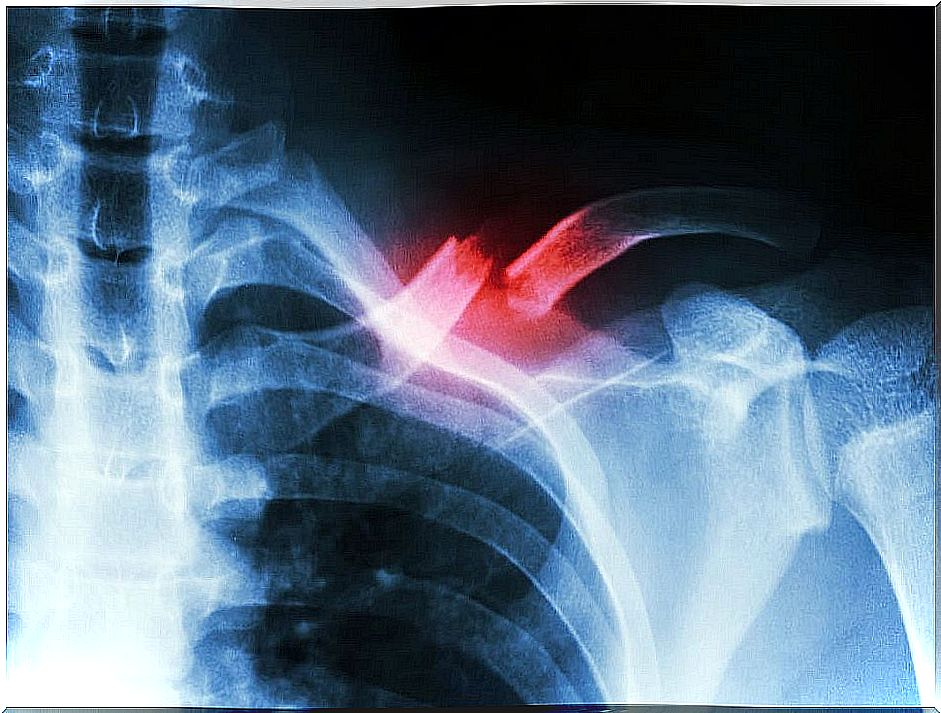Stress Fracture: Where It Mainly Occurs
Stress fracture occurs mainly in the foot. It is not easy to diagnose it, since it is a small crack that does not appear on ordinary x-rays. If left untreated, it causes severe and chronic pain.

We speak of a stress fracture when there is a small break in a bone that has its origin in a cause other than a strong blow. In this case, the most common cause is repetitive movements or a rapid increase in the amount or intensity of an activity.
These types of fractures are not easy to diagnose. It requires a specialist and complementary tests so as not to confuse it with other pathologies. This is because it is common for plain radiographs not to detect the fracture.
Athletes are those who are most at risk of developing a stress fracture. 2% of sports injuries correspond to this type of fracture. If left untreated, it causes severe and ongoing pain. There is also a risk that the fracture will shift.
What is a stress fracture

There is a fracture when there is no continuity in the bone tissue. Most of the time this occurs from a blow or trauma. In the case of stress fracture, the cause of the problem is weakness or fatigue . There is weakness when there are bone deficiencies. And there is fatigue when there is a continuous abuse of muscular activity.
Stress fracture is a kind of crack in the bone. This is formed due to repeated microtrauma or overload. It manifests itself mainly through strong pain that appears when doing physical activities and disappears when you stop doing them.
Bones are made up of collagen. This compound facilitates a remodeling process of the bone, when it is subjected to an attack. In this way, the damaged tissue is reabsorbed and then re-forms.
But if the attacks are continuous, or too sudden due to overload, the damage exceeds the body’s ability to replace collagen. That’s what happens in a stress fracture, due to overuse, repetitive movements, or problems like osteoporosis.
Types of stress fractures
Stress fractures can be classified into two large groups: low risk and high risk. This classification is due to factors such as the affected area, the potential for complications, healing time, the presence of nonunion, and the way the fracture heals.
The characteristics of each group are:
- Low risk fractures. They are those that are treated simply with the elimination of the activity that generates the injury. They correspond to fractures in the upper extremities, rib, pelvis, femur, tibia, lumbar vertebrae, fibula and calcaneus.
- High risk fractures. This type of stress fracture has considerable potential for complications. It corresponds to injuries to the neck of the femur, the tibial malleolus, the tarsal scaphoid, the talus and the base of the metatarsal.
Main locations
Stress fracture can affect a large number of bones in the body, which for one reason or another are subjected to repeated loads. However, the foot is one of the points with the highest risk of being affected by this type of injury. The most common fractures in the foot are the following:
- Second metatarsal fracture. It is the most common stress fracture. The second metatarsal corresponds to the longest toe, which is therefore the one that supports the load the most during activities such as athletics.
- Fifth metatarsal fracture. It is typical of all activities that require lateral movements and jumps.
- Calcaneal fracture. Own activities in which the first support is done with the heel.
- Talus fracture. It is not common and neither is it specific to any particular activity or sport. However, it causes great inconvenience.
- Fracture in the internal malleolus of the ankle. It is typical of activities that involve jumping and / or long-distance running.
Likewise, it is relatively common for this type of fracture to occur in other areas of the body. In particular, in the fibula, the pelvis, the neck of the femur, the sesamoids of the foot, and the epiphysis of the fibula.
From the point of view of each sporting practice, there are stress fractures that are more typical of each discipline. The metatarsal is more common in marathoners, footballers, dancers and volleyball players. In handball, the fracture of the first rib is more frequent and in golf, the fracture of the lower ribs.









